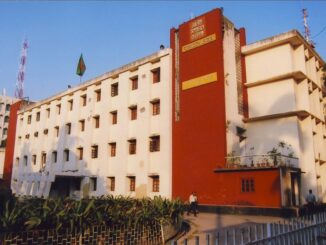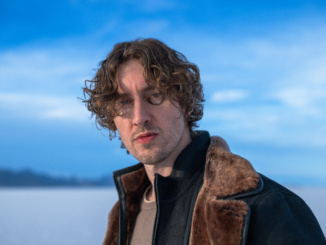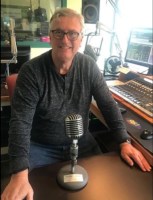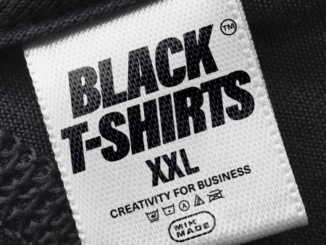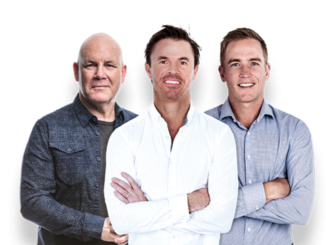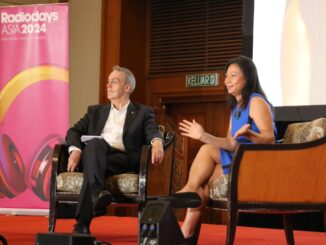Each year, as part of the Asia Podcast Awards, an outstanding podcast finalist is selected to speak at RadioDays Asia.This year it was K Oanh Ha, Bloomberg reporter and host of The Big Take Asia podcast.Big Take Asia had the most number of finalist nominations in this year’s awards.Speaking to Steve Ahern at RadioDays, Oanh discussed the way the podcast is produced and shared techniques, such as the rehearsal Table Reads method with other podcasters in the audience.Oanh joined Bloomberg in 2010 as Vietnam bureau chief, she is now based in Hong Kong. Before joining Bloomberg, Oanh worked as a host and reporter for KQED Public Radio in San Francisco. She was born in Vietnam and grew up in California.Here is her conversation, which is also available as a radioinfo podcast below.STEVE: Tell me about your podcast.OANH: It’s super exciting. It’s called the Big Take Asia, it was launched earlier this year in May. It’s a weekly podcast taking the biggest, most compelling, most interesting story in Asia that our reporters and our newsroom has produced and extending that story in, hopefully, a compelling and interesting way for a different audience.It’s a way to tap into our newsroom. You mentioned Bloomberg is one of the biggest media organizations… I’m super grateful to be working for such a well resourced organization, we have a huge newsroom here in Asia, hundreds of reporters in more than a dozen bureaus.Being able to tap the expertise that we have just in the newsroom is pretty amazing… if you’ve worked in a newsroom, you come back after a weekend and the best thing to do is meet your colleagues around the water cooler and just say, hey, what are you guys working on? It always is a fascinating story about what they’re working on, so being able to have that conversation live and curate it for a different audience is really cool.STEVE: Those of us who’ve seen the Bloomberg financial screens, we know that they’re constantly updated with information, and of course Bloomberg publishes long form text and photo stories, but I imagine not so many of your colleagues would be familiar with working in audio. So let’s talk about how you bring them out into the audio How do you brief them kind of things do you talk to them about when you’ve chosen them to talk about their story that week?OANH: Yeah, that’s a really good point. As you know, most print reporters are not super comfortable being on camera or mic, and being a broadcaster does require special skills. With reporters, if you’ve reported a story you instantly become an expert so we’re basically taking that expert in you and trying to get that out for the listening audience.It sometimes does require some preparation so we do have a conversation with the reporter beforehand, like a pre-interview. The producers usually do that. From that conversation they extract the most interesting element.What’s the arc of the conversation. We prep them about what we want to ask… not too many details, not very detailed, but just enough to get them going… then it’s just a conversation that.Eventhough it’s for audio we try to get them on Zoom… just having that interaction instantly changes the rapport between us and the conversation becomes more fun and light and more energetic… We create a script out of it then edit and mix the conversation, both here in Hong Kong as well as in London amd New York.STEVE: You’re very lucky to have such a team.OANH: I think at the heart of it is that the topic has to be interesting. So if it’s a good conversation, if it if it’s insightful, if it is full packed, full of information, then you have something to build and to mold, to make into something that potentially could be really great once you add all the bells and whistles. I think if you have the starting point of good information, insightful… stuff that you yourself is interested in, then that is a building block that’s the foundation of everything.STEVE: Give us an example. How would you find an in, to a story you’ve done recently?OANH: Sure… Who here has heard of carry trades?STEVE: Nobody’s heard of that stock market thing.OANH: Carry trades. Right. Not something that you would discuss over the kitchen table. But carry trades has been in the news if you’re watching business news… we found that we had to explain what carry trades is, because it obviously is important and it’s impacting the markets… we then did an explainer to explain what is carry trades. The way we told the explainer was actually through the character of (Chinese dumplings) Xiaolongbao. Those dumplings with yummy broth inside. Our producers came up with this ingenious idea…STEVE: So this was just a whole excuse to get some free lunch?OANH: That’s right, that’s right… We love food… we could use it as a prop that’s a way to bring the story in. So anyways, in my conversation with our columnist Julie Wren, in explaining what Carry Trades are, she explains it through Xiaolongbao. It’s basically about currency… their interest rate is so low, it’s basically free money, people will of course borrow because it’s free money, literally, and then lend it out at a higher interest rate, like in the US where it’s 5.25, and you then make money right off that. What happened in the last few weeks is that the Bank of Japan raised its interest rates, so all of a sudden it was not no longer profitable for a lot of people, and people lost money off of that… that’s how it roiled the markets.Julie explains it’s all about purchasing power and explaining the currency market. She goes, well, in New York as well as London you can buy eight [dumplings] for $10. You can actually get six Xiaolongbao in Hong Kong, but in New York you can only get four… in Tokyo you can actually get eight xiaolongbao. So that explains the whole currency difference and why carry trades were popular and were the vehicle that the people gravitated toward. The Xiaolongbao becomes a huge feature in our telling of this. Our producer actually ran out to get Xiaolongbao dumplings… I ended up having a conversation about Xiaolongbao and explaining the story through Xiaolongbao dumplings.It’s actually one of my favorite episodes because it was a lot of fun to do it.STEVE: Not only are you making me hungry, you’re making me want to listen to the podcast.OANH: We’re always constantly asking the question, what does this mean in a larger context? Why would somebody in New York or India care.STEVE: I think that’s a really important point and a great story to illustrate it. You have another example of an interesting story you’ve been covering.OANH: Yeah. One of our star reporters, Matt Campbell in Singapore did a huge investigative feature that was thousands of words long, and it looked at Laos and the special economic zone that called the Golden Triangle Special Economic Zone, which had been basically huge tract of land that had been leased to a Chinese entrepreneur in Laos… Matt’s feature, which is fantastic, really delved into how this special economic zone, which was meant to help bring prosperity to Laos, has actually become this hub for criminal activity. What started off as drugs 12 years ago has now morphed into a place where data centre scams are happening. His story was fantastic.[Bu]} I’m reading the script… then by the time we finish, we’re like, you know, I don’t think that story is so huge, and I feel like it needs to be unpacked a lot more. We didn’t feel like it worked the first time around. It was interesting listening to it as we going through that process where we realized, oh, let’s maybe tweak some stuff.Because of that we went back in and we tweaked and changed a couple of scenes and really told the story in a different way. In the end, we told the story through a character that was not really a strong feature character in the story itself, but we found her story to be really compelling. And it was a story of a woman who had been trafficked to work at one of these data centers.STEVE: I love that idea that you’ve picked a character to bring you through that complex news story. I also like that you have the time… it’s a good example of how you can use good practice.I really liked what you said about rehearsing it through and then deciding it doesn’t work… you had enough time to be able to do a rehearsal. Think about it, talk with your team, and then make a decision that it wasn’t going to work in that format. That’s a real principle of good journalism. It’s an editorial principle. You write the story or you film the story, but then someone else takes a look at it from the storytelling editorial perspective. And if it’s not right, you send it back to be redone.OANH: The more you can prep both yourself and your guest [the better]. It isn’t about telling them everything or giving them all the questions… it’s really just about talking. You have a sense of what they have that could be really good nuggets there… you have to have a story arc and then lay down those nuggets for people to.STEVE: That’s kind of a television thing, a table read. But the way you’ve described it sounds like it’s a really good thing for podcasts too. You’re thinking about not just a daily or an hourly production schedule of live radio, but a weekly production schedule, the idea to build in a table read somewhere. I think would be a very good step in podcast process.OANH: Yeah. Whenever you can build time into it, it’s so worth it. We probably do 45 minutes to an hour… we talk about what works, what doesn’t work… it does require a lot of prep work, but I think in the end the result is much better…STEVE: Thank you for a fascinating conversation. […]
